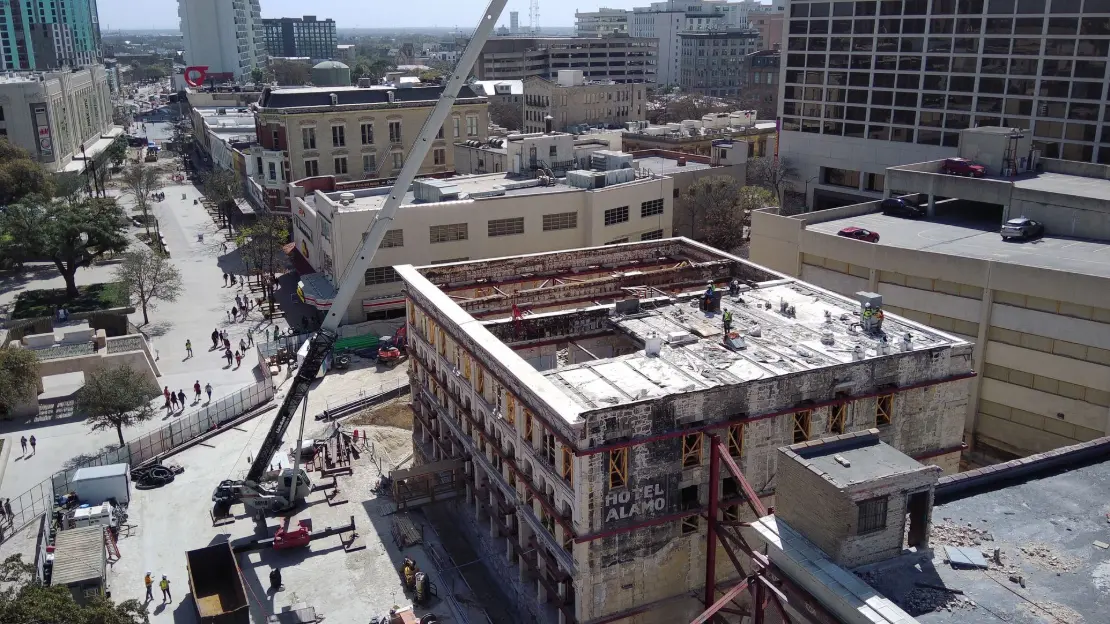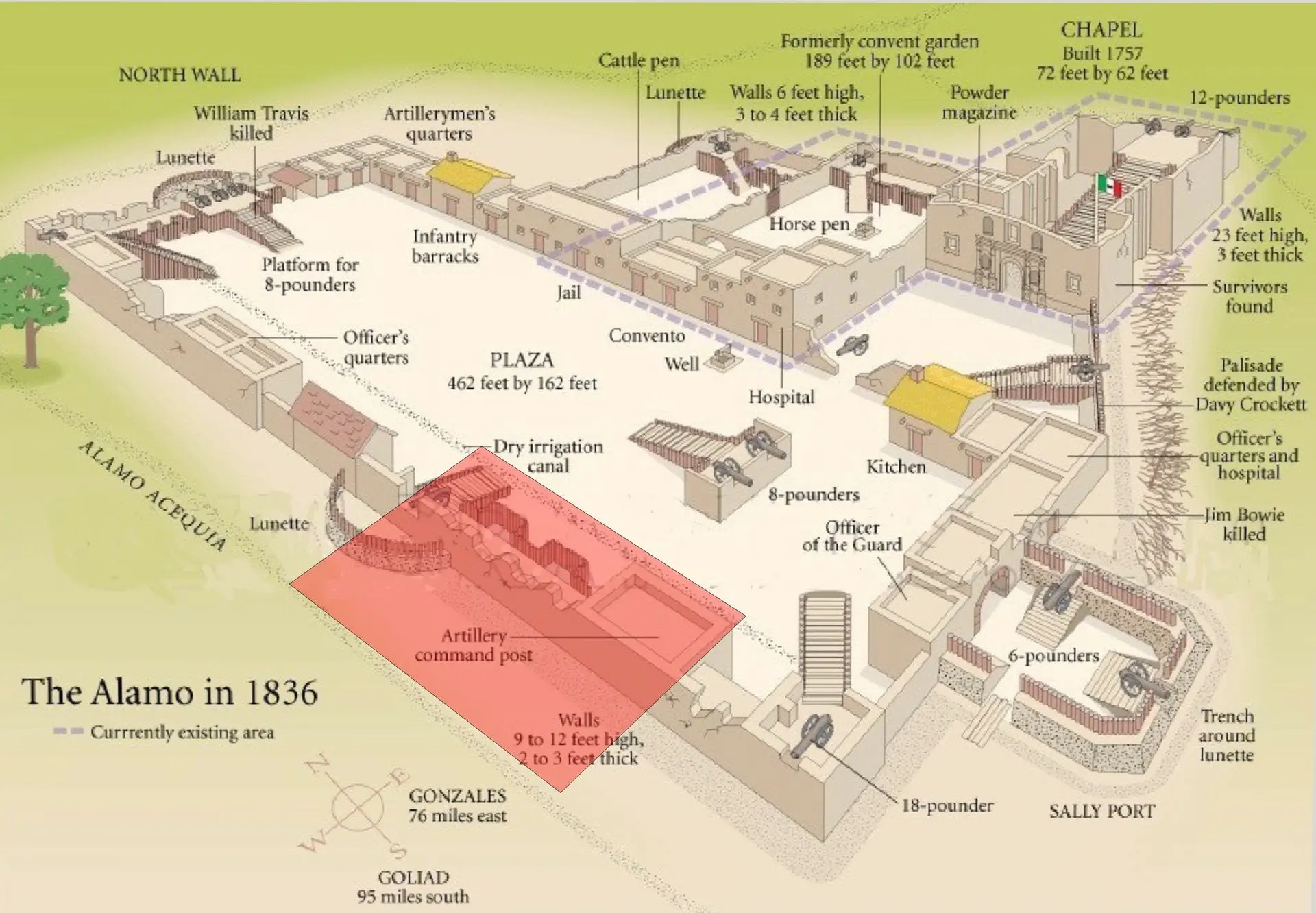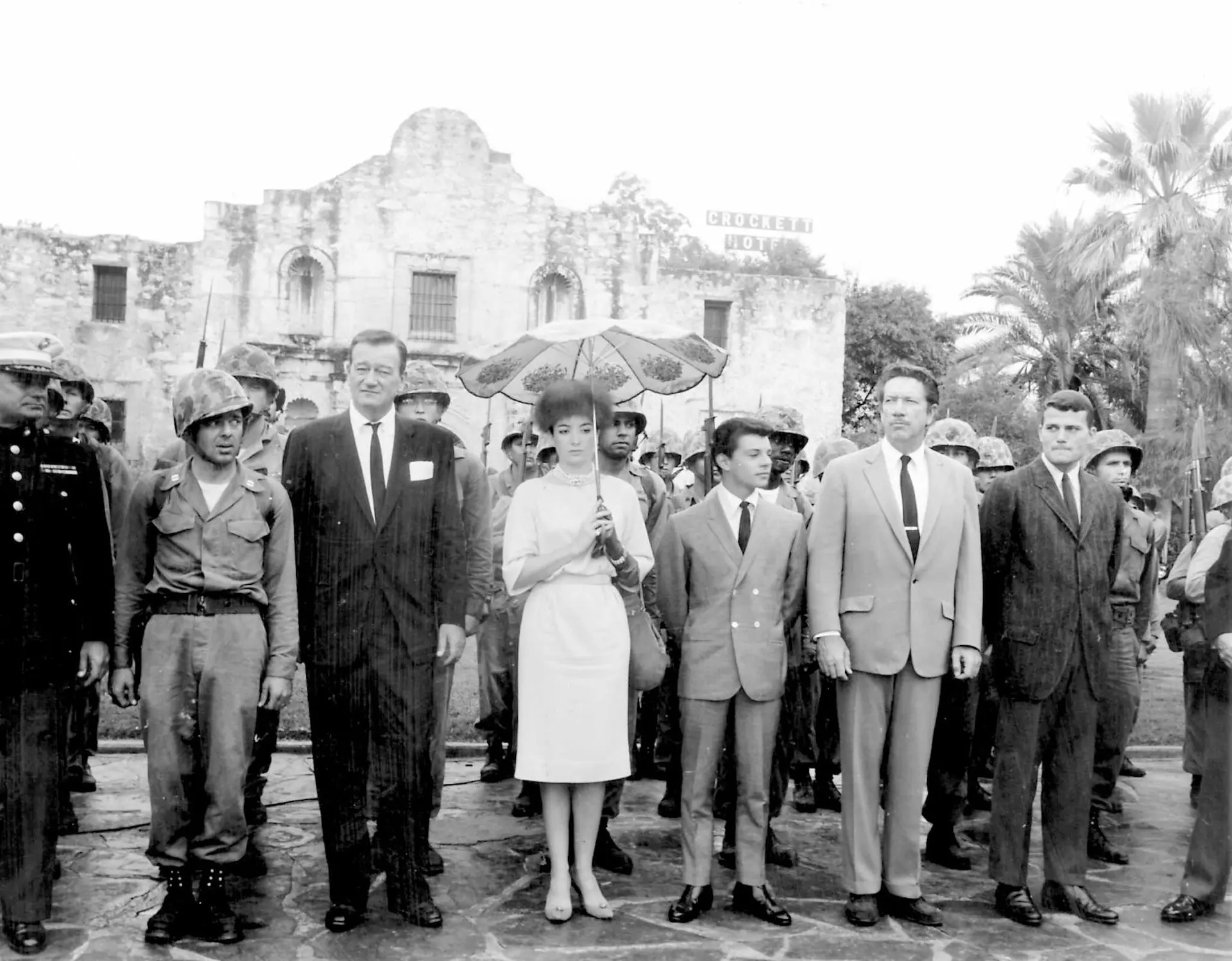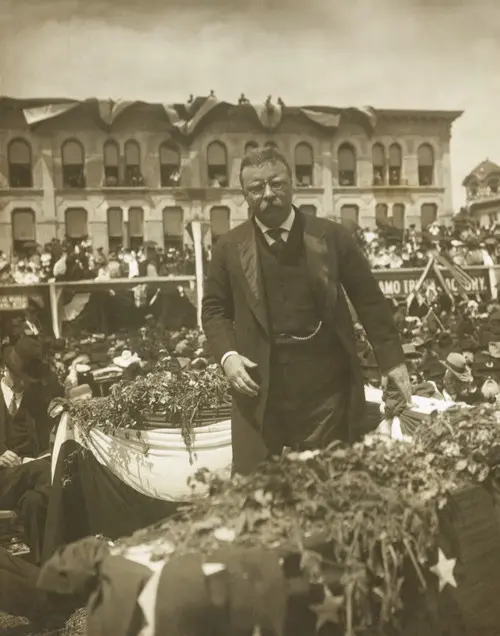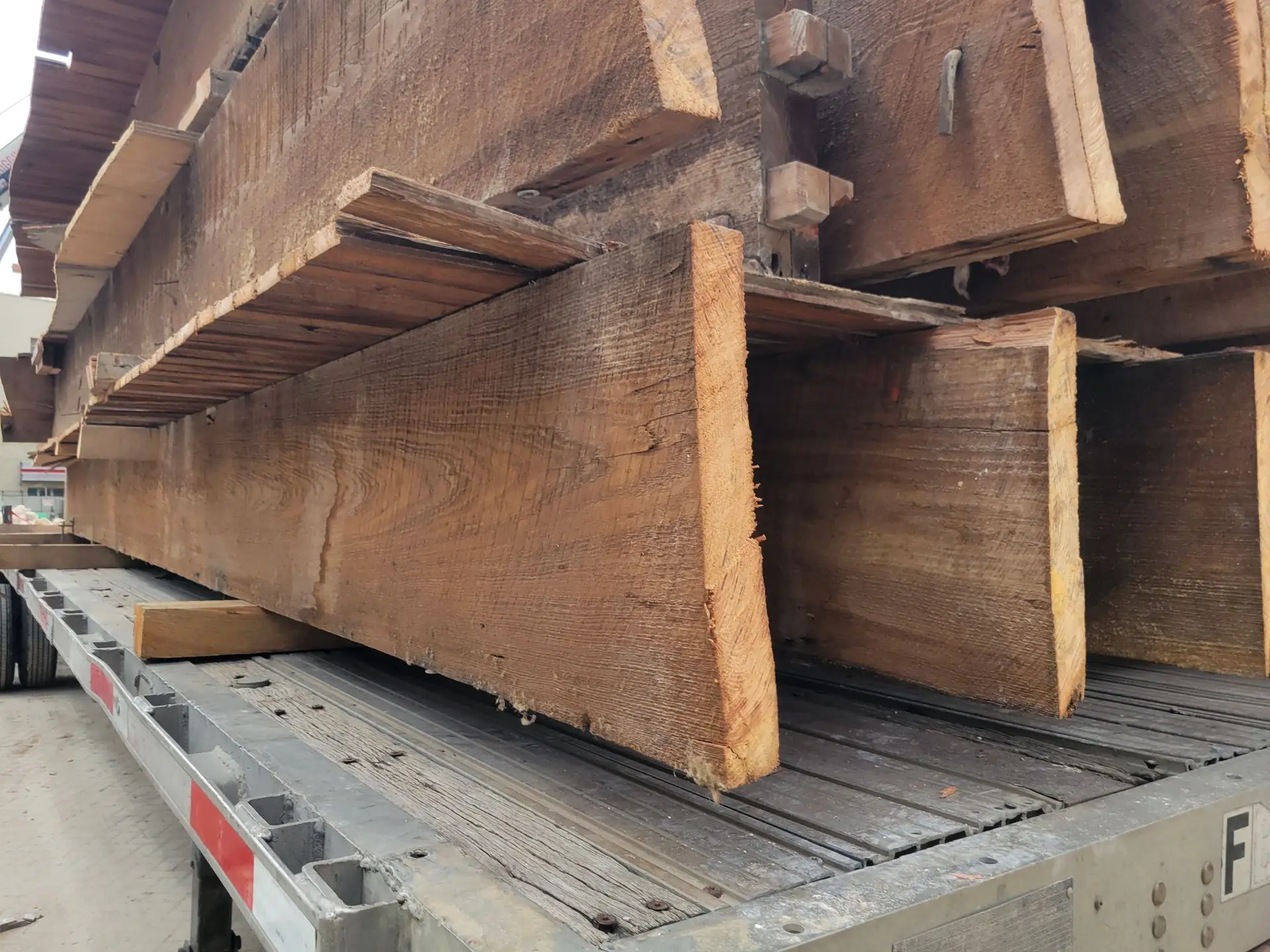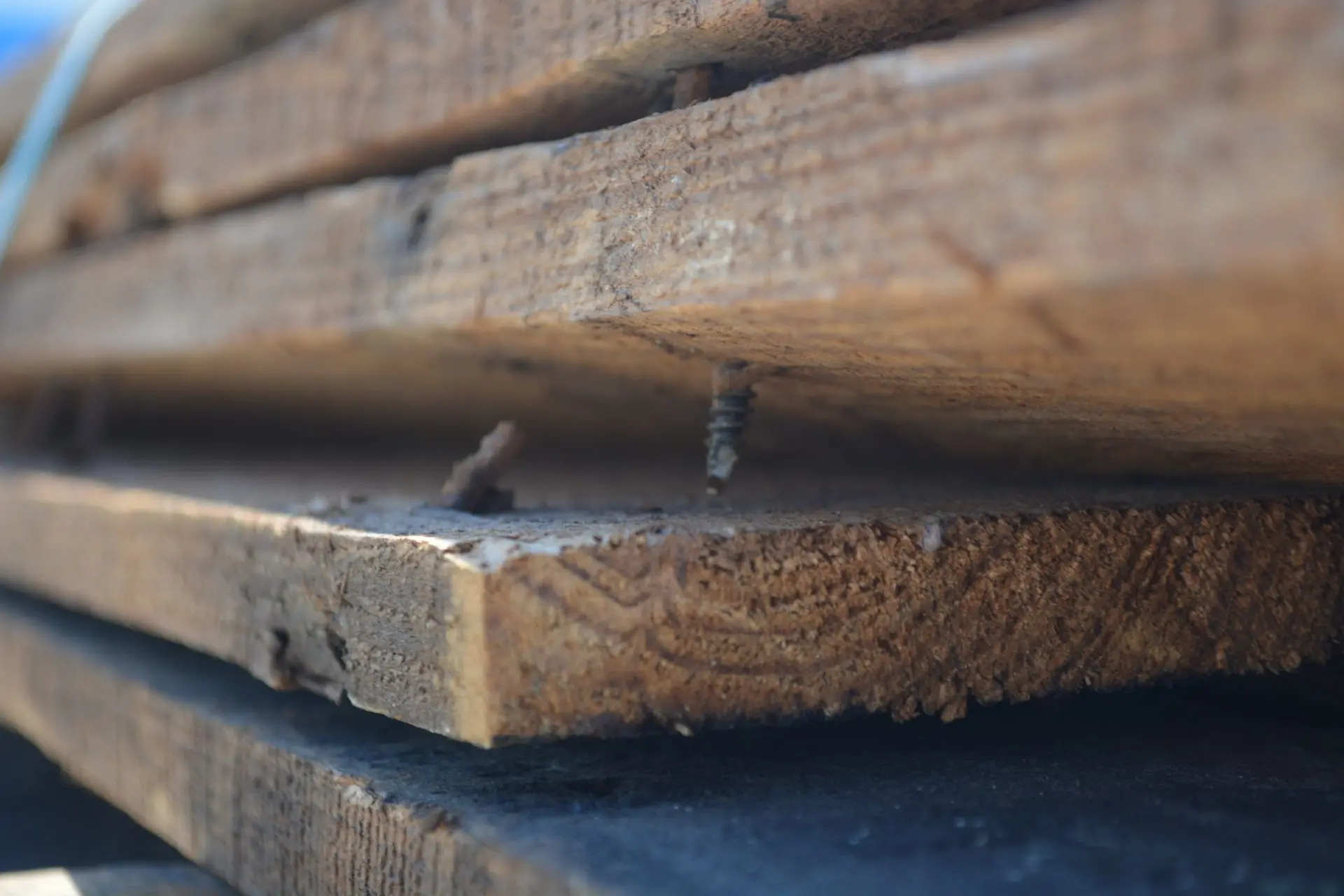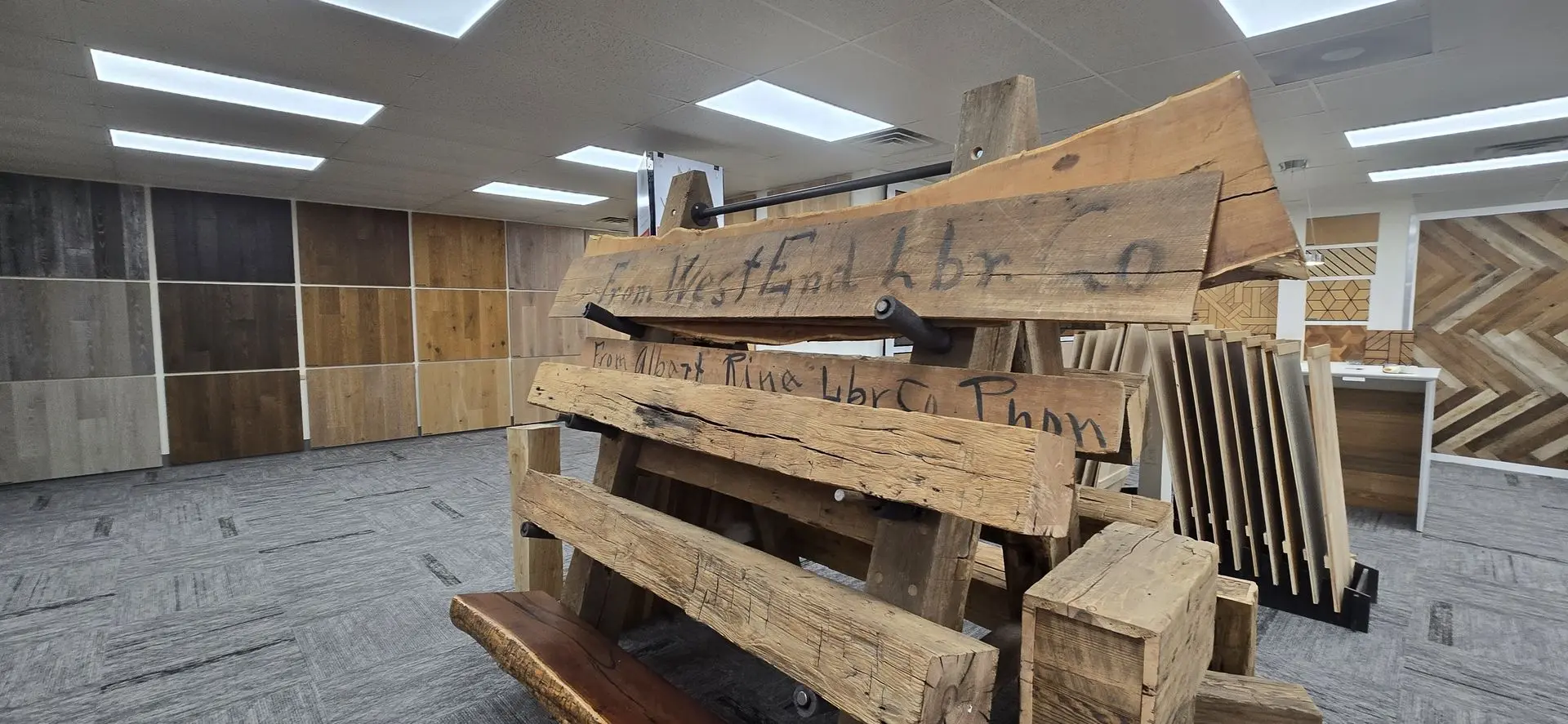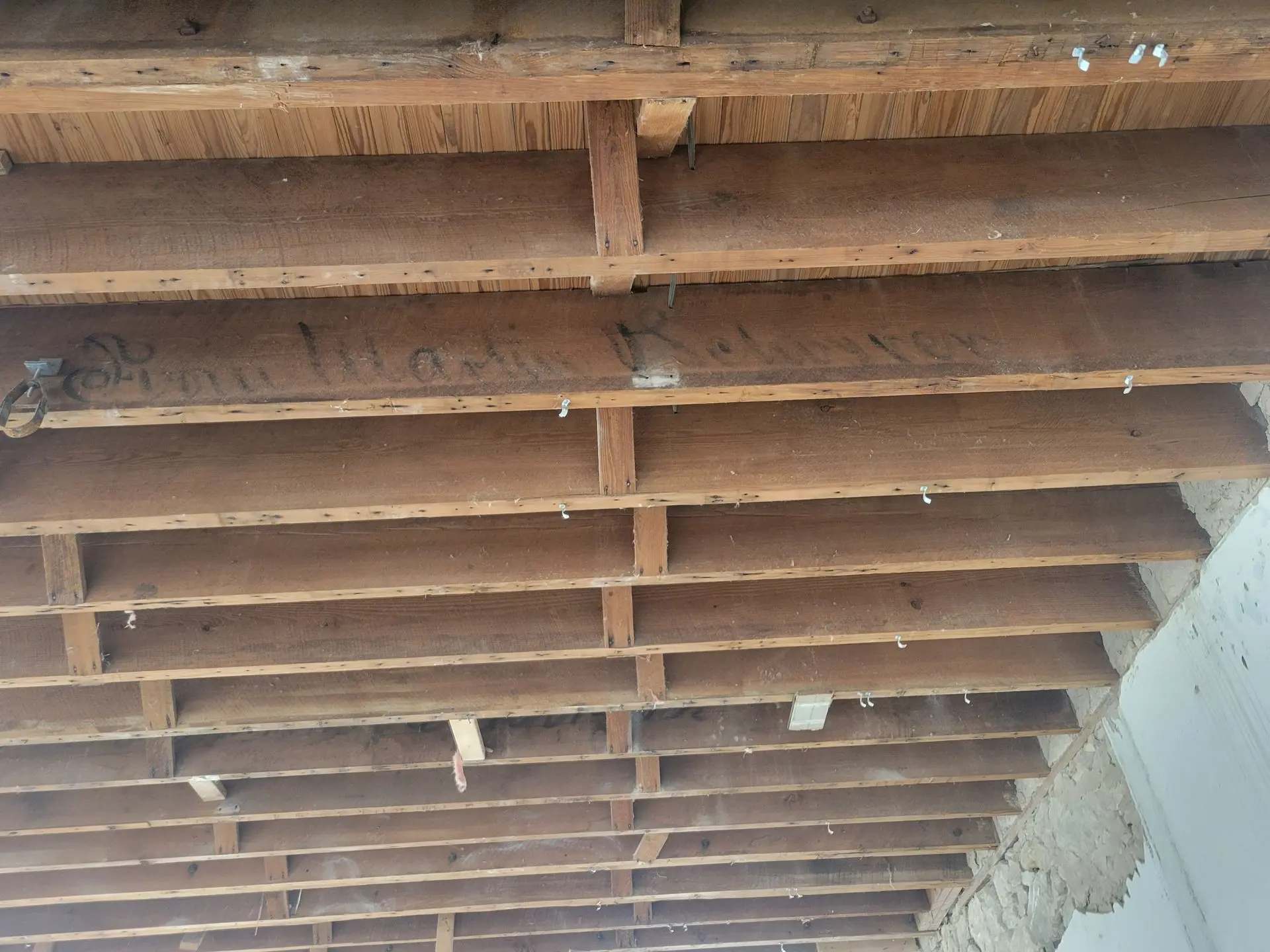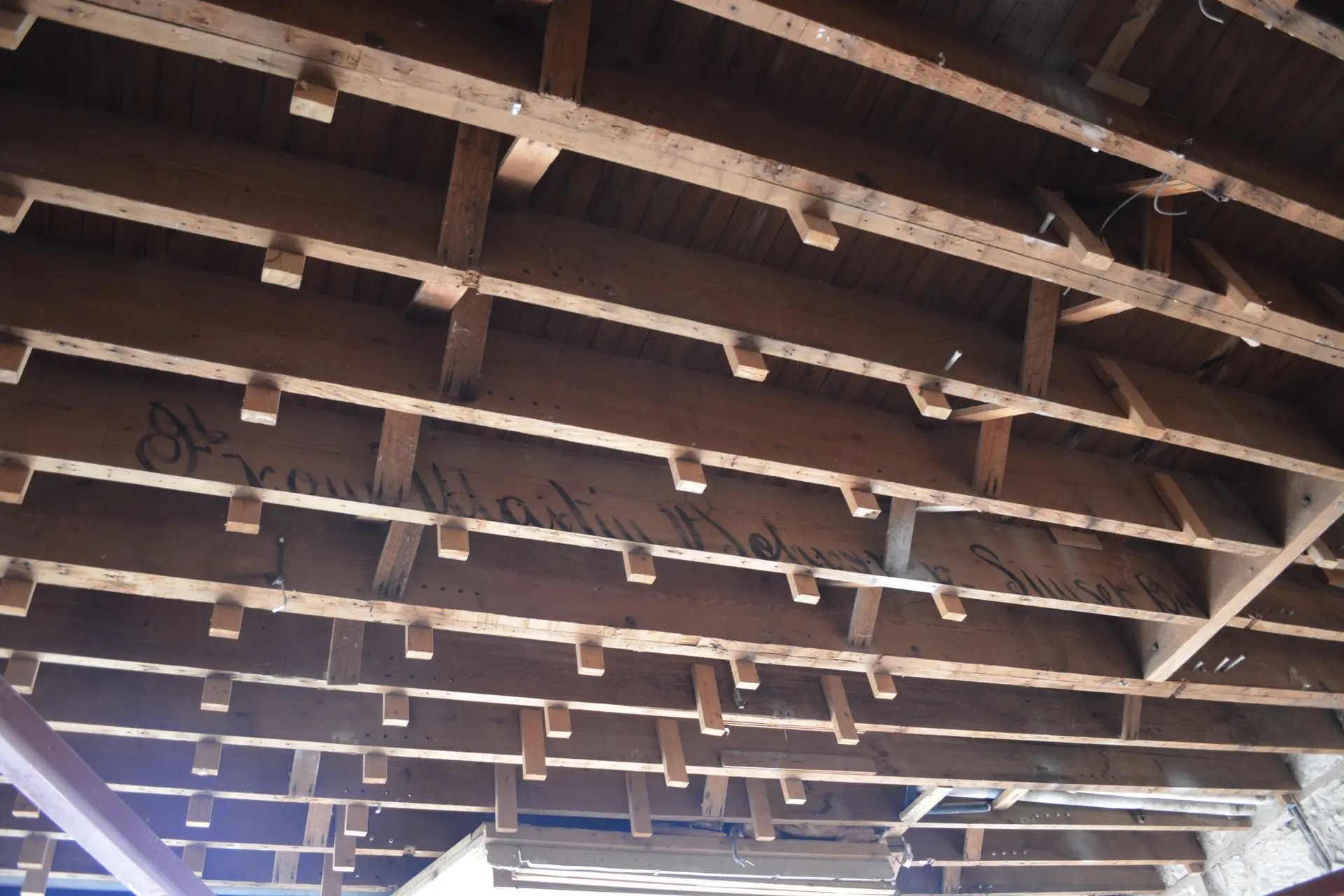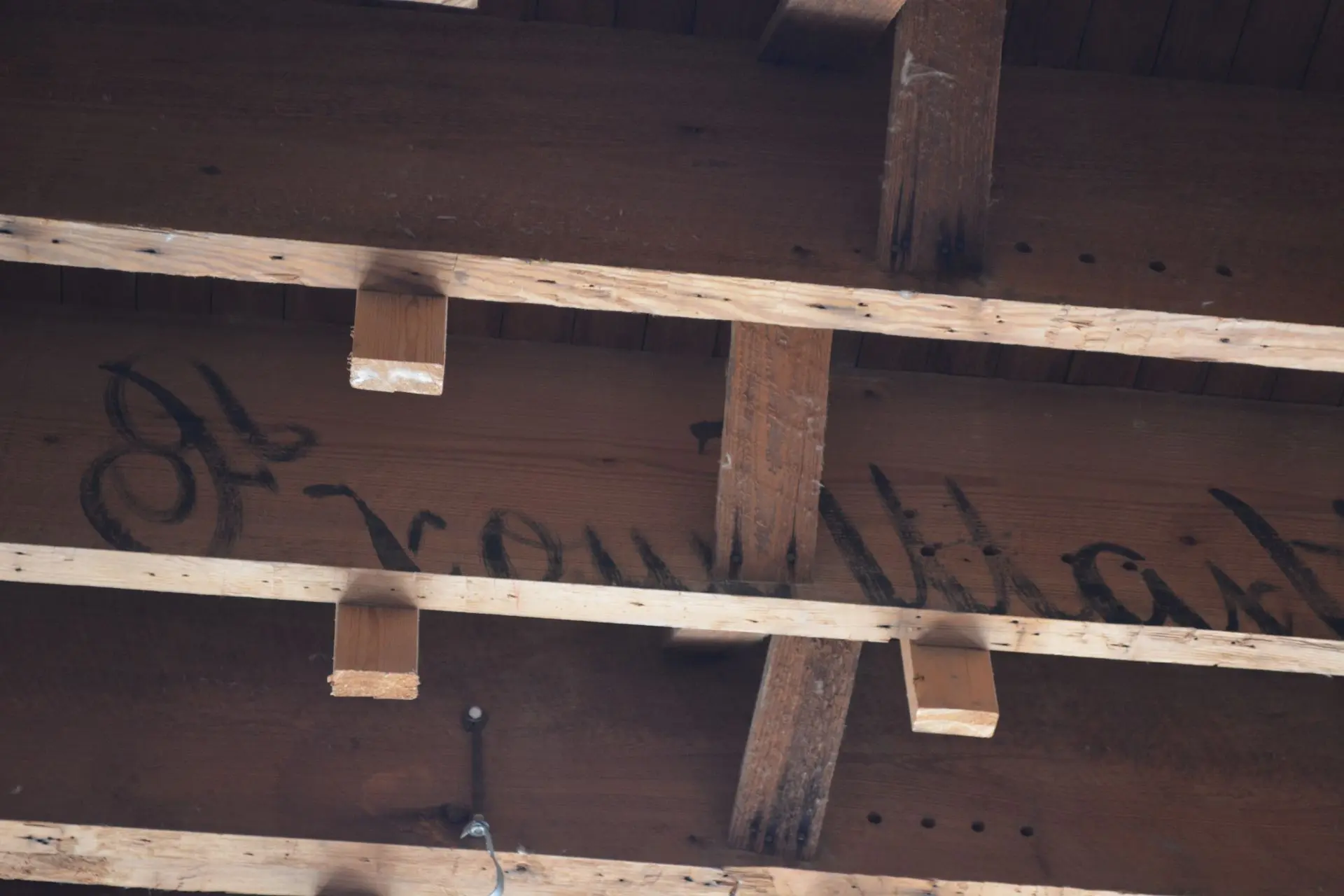Just steps from the Alamo, one of the most historically significant buildings in Texas is entering its next chapter. The Crockett Building, constructed between 1882 and 1883 by the Maverick family and designed by renowned architect Alfred Giles, is being carefully dismantled as part of a broader restoration of the Alamo district.
As the Crockett Building begins its next chapter, WoodCo is reclaiming the structural wood that helped shape San Antonio’s skyline. For architects, designers, and anyone drawn to the built history of Texas, this is a rare chance to trace the story of a landmark through the very wood that held it together – and to see how that material is being reclaimed for a new generation of projects.
Built on History: The Crockett Building’s Story
The Crockett Building was named to honor Davy Crockett, one of the most iconic defenders of the Alamo who died during the 1836 siege. It was designed by Alfred Giles, a prominent Texas architect responsible for many landmark structures across the state, and built in 1882–83 by the Maverick family – prominent San Antonians with deep ties to Texas history.
Samuel Augustus Maverick, a lawyer, politician, and signer of the Texas Declaration of Independence, had been inside the Alamo during the siege but left at the request of fellow defenders to represent them in the vote for Texas independence.
When the mission fell and his companions perished, Maverick was deeply affected by the loss. After returning from imprisonment in Mexico, he purchased the land surrounding the Alamo. His sons later commissioned the Crockett Block as a tribute to those who had fallen.
The Crockett Building (also referred to as the Crockett Block) sits along what was once the west wall of the original Alamo compound, a place with deep historical resonance. From retailers and hotels to visitors of national significance, over the decades, it has hosted a wide range of occupants. It’s said that Theodore Roosevelt, Richard Nixon, and Johnny Cash all walked its floors, adding cultural texture to an already meaningful site.
The Bones of the Building
The Crockett Building was framed with longleaf pine, cut and placed in the early 1880s. Over the last 140 years, the wood has darkened and settled into itself, gaining a texture and tone shaped by time, use, and place. Across the building’s five levels – roof, ceiling, and floors one through three – each structural element was framed using solid longleaf pine in generous dimensions.
Roof rafters were built from 2x10s, ceilings from 2x12s, and floor joists from 2x14s and 2x15s, depending on the level. These substantial boards reflect the construction standards of the time and now offer highly sought-after material for reclamation.
What remains is a rare internal framework that is unaltered in many places, despite layers of renovation over the decades. That’s what WoodCo is reclaiming: authentic structural lumber, shaped by 19th-century tools and time itself.
This wood carries a rich patina – a layered, lived-in surface that develops over time. Each imperfection becomes part of the design as a visual record of the building’s past, and a ready canvas for its next chapter.
Reclaiming Wood, Restoring Legacy
The deconstruction of the Crockett Building is exacting work. Crews deconstruct the building beam by beam, floor by floor, removing each board by hand and crane to preserve its full length and structural integrity. On site, the wood is sorted and stacked before being transported to the WoodCo mill.

Reclaimed wood comes from a different era of growth; when trees matured slowly, competing for sunlight and nutrients. That natural density gives the material exceptional strength, tighter grain, and rich, one-of-a-kind character.
This kind of material comes from buildings that stood for generations. Wood that’s already proven its longevity and offers architects and designers access to historic integrity, without sacrificing performance or precision.
During reclamation, great care is taken to preserve the original characteristics of each beam, especially in structural members such as floor joists and roof supports, which often span 20 feet or more in length. These large-format pieces are ideal for remilling into wide-plank flooring or striking feature elements in new builds.
Details That Reveal History
Reclaimed wood carries physical evidence of the time and place it came from – details that connect it directly to a lived past. Each board tells a story through its grain, its wear, and its markings.
Some boards reveal old tool marks or saw kerfs from hand-operated saws. Others carry signs of early joinery, bolt holes from antique construction methods, or slight undulations shaped by decades of foot traffic.
During salvaging, a rare discovery also came in the form of hand-painted coal tar lettering – original branding from 19th-century lumber merchants.
These marks were painted directly onto the sides of beams so that, as they were carried by horse and cart through the streets of San Antonio, the supplier’s name would be visible to everyone. Over a century later, those markings remain intact, preserved beneath layers of time.
The Crockett Building was modified over time – housing retail shops, office spaces, and hotel rooms – but its core structure endured, and many of its materials were simply built around, not removed. This creates a layered story: wood that has adapted, survived, and now becomes part of something new.
Visible history runs through the core of this material, and continues into the new spaces where the wood will live again.
At the Mill: Crafting the Next Chapter
Once the material reaches the WoodCo mill, every piece goes through a detailed inspection and preparation process. Old nails, bolts, and hardware are removed by hand. The wood is cleaned, graded, and carefully re-milled to retain its original texture and form.
Not every beam makes it through, but those that do carry the strength of age and the clarity of modern craftsmanship. The mill transforms raw material into something truly ready for new life.
History You Can Build With
Reclaimed wood offers something rare: proven strength, real history, and a smaller environmental footprint. It’s material that’s already done decades of work – and still has plenty left to offer. It helps preserve forests, reduces the demand for new logging, and prevents historic materials from ending up in landfills.

If you’re curious about what makes reclaimed wood special, or how it compares to new material, we’ve answered the top five questions in this guide.
The Crockett Building is a landmark with a hidden resource inside: rare, seasoned wood with decades of strength behind it. Each beam carries the marks of time, etched with details that enrich its design. And each floor, wall, or stair made from this material extends that story forward.
A Unique Offering for Architects and Designers
This reclaimed material offers authentic provenance. It’s rare to find wood with documented ties to an American landmark, let alone one tied to the story of Texas independence. For architects, designers, and homeowners, it presents the opportunity to work with wood that offers both design integrity and historic substance.
Whether installed underfoot, shaped into staircases or built into paneling, Crockett Building wood introduces depth and character that can’t be replicated. It’s an ideal material for those who value heritage alongside innovation, and who want their spaces to carry stories as well as structure.
The Next Chapter

This project carries particular meaning for WoodCo. Reclaimed wood has been part of our DNA from the beginning, shaping our approach to craft, sustainability, and story-driven design.
Being part of the Crockett Building’s next chapter connects deeply to who we are and where we began. We’re proud to carry forward this legacy material, and to give it new relevance in the hands of today’s architects and makers.

The Crockett Building project is ongoing, and every week reveals new stories and new materials ready for a second life. We will continue to share these discoveries and make select quantities of this historic wood available for architectural projects.
If you’re considering reclaimed material for an upcoming project, this is a rare opportunity to work with wood that stood beside the Alamo. Quantities are limited, so please reach out to our team to explore availability.
